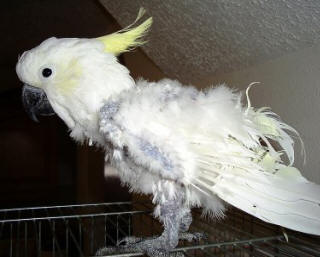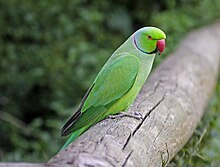
The masked lovebird is the most common of the four species and can often be found for sale in pet stores at reasonable prices. Fischer's are still fairly common, but they cannot be imported. One can expect this to Possibly raise their market value and lower their availability. Until recently, the black-cheeked love bird was extremely scarce in the United States, but there are a few breeders who are painstakingly building up colonies that will hopefully make these birds more readily available in the future.
Several breeders have diligently worked with the Nyasa lovebird in the past, and, in the long run, all of them met with failure. The Nyasa is a difficult bird to acclimatize, and the mortality rate for youngsters going through the first molt is usually terribly high. Presently, I know of only two breeders who are working with this bird in the U.S., and through their efforts, we will hopefully see this tiny bird established.
In their natural coloration, all four species have characteristics that make them similar in appearance: the eye-ring, a red beak and a green body.The mask and the Fischers are about the same size (6 inches long), with waxy red bills and blue-colored rumps. The black cheek and the Nyasa are smaller (5 inches long), with light-green rumps (any discoloration is a sure indication of hybridization with masked or Fischer's Love Birds). They have a distinct brown iris, and their bills are red at the tip and gradually fade to a pale pink at the base.
















